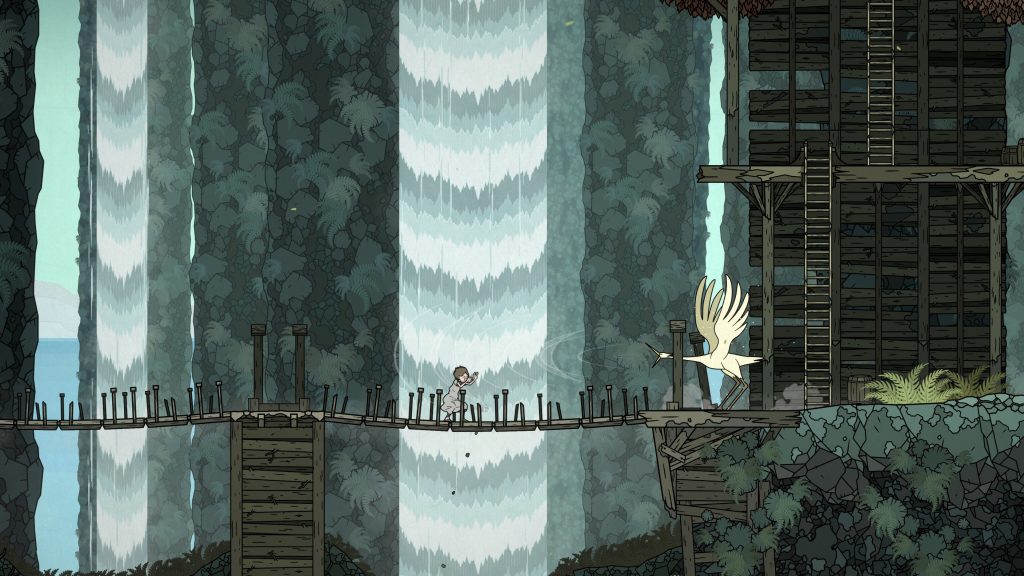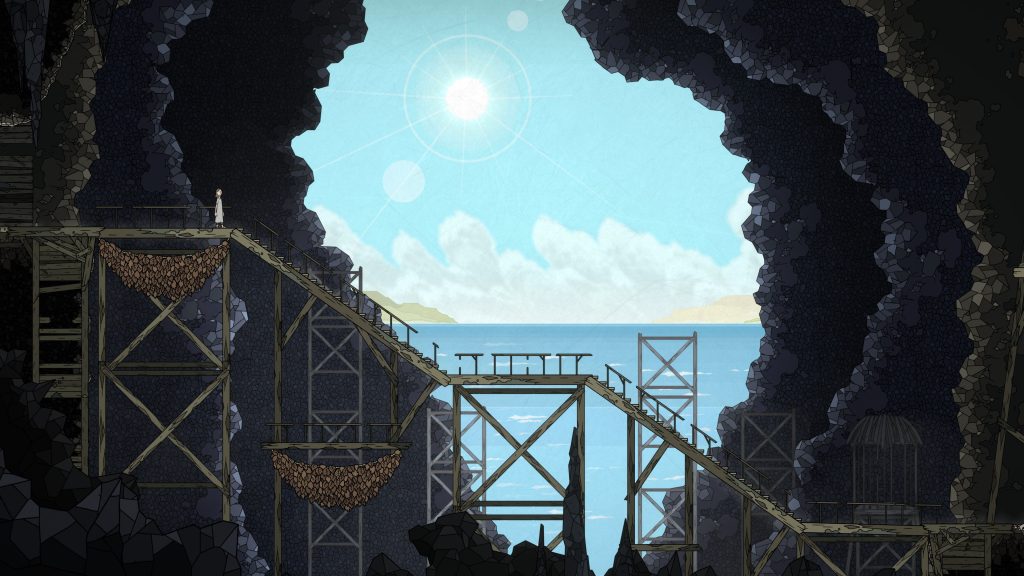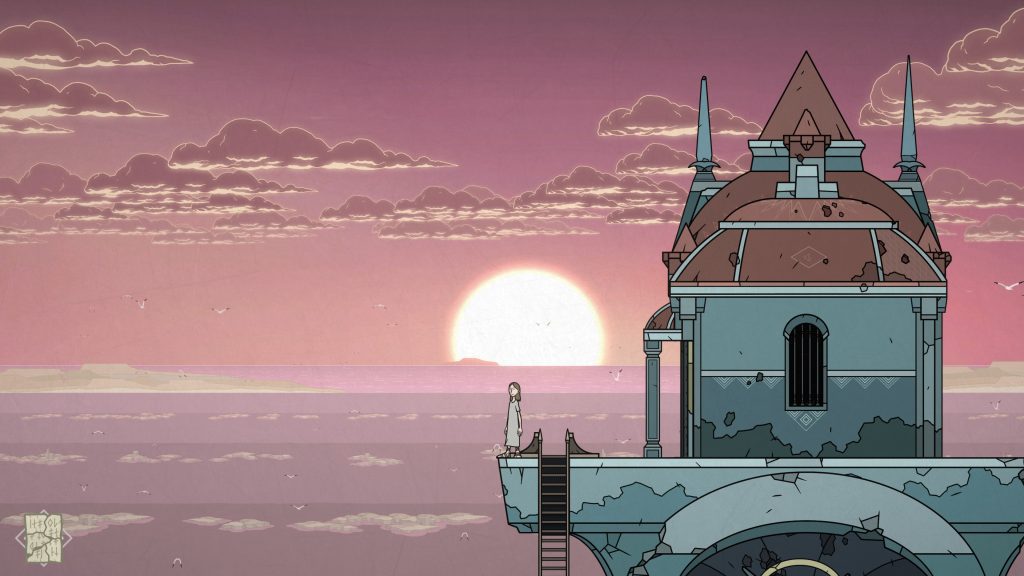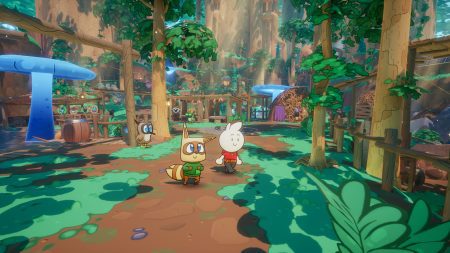I completed Empty Head Games’ debut title Saviorless not just once, but twice over the course of a weekend. Billed as “the first Cuban indie game” by its developers, Saviorless offers a carefully illustrated 2D world. Though my playthroughs only lasted about three hours a piece, they certainly left a lasting impression.
Saviorless is a meditation on narrative that asks two primary questions: Who gets to tell the protagonist’s story, and who gets to revise it? In a way, this meditation reflects the game’s tumultuous seven-year development cycle—a journey consisting of a name change, financial concerns, and team turnover. Despite the struggle, the studio’s efforts more than pay off.
Saviorless’ writing and art steal the show, carrying the experience even when the game’s platforming and combat prove unwieldy. I left Saviorless satisfied with the overall experience, if not a little frustrated by the occasional mistimed jump or misjudged dodge. Flaws and all, though, this game is something special.
Combating Narratives
Saviorless begins with two young narrators, Arimbo and Len, and their uncle Tobias. Tobias has repeated the same story of the protagonist Antar to the point of driving his niblings to boredom. When Tobias eventually falls asleep to his own story, Arimbo and Len decide to create their own protagonist, Nento, breaking the linearity of the story and driving its progression into chaos.
Saviorless thrusts players into the story to experience it firsthand. In the lead-up to the young narrators’ actions, you control Antar as he navigates environmental platforming challenges, a la Playdead’s Limbo. The only real danger early on comes from herons, which use their wings to blow down platforms and bridges and impede the protagonist’s progress.

The game quickly becomes more violent, at times even grotesque, after the entrance of the hunter Nento. Playing as Nento gives players the earliest taste of the game’s visceral combat. The game’s fighting mechanics are simple, requiring only two buttons: one for hitting, and another for dashing. The closest thing to a “combo” is hitting while dashing, but even that feels like a stretch. Enemies move about in predictable patterns, but do offer the occasional challenge.
Midway through Saviorless, Antar takes on a masked identity: the Savior. These gameplay segments are never terribly long but do an interesting job combining Antar’s platforming with Nento’s combat. The coalescing of these elements proved to be some of my favorite moments.
Antar is far from invincible as the Savior. The white halo around the character’s head not only visualizes his health bar but also serves as a timer. If not replenished by killing enemies or breaking objects, the Savior dies, sending him back to the last checkpoint as Antar.
There are plenty of ways to die as the protagonist of a story, and Saviorless reminded me of this often. I frequently found myself one overconfident jump or botched counterattack away from death. The game isn’t hard per se, but it can be unforgiving. Its inconsistent checkpoints lead to frustration. These issues, paired with the fragility of Antar’s base form (get hit once, and you die), sometimes prove exasperating.

Paging Through
Saviorless builds its world in different ways. Of course, there’s the game’s art. But Empty Head also fills in the spaces with equally emotive music. The results are surreal—a presentation of religious iconography against a soft color palette that evolves along with the game’s story.
Each area’s background is beautifully illustrated, from unsettling forests to decaying architecture. The developers filled Saviorless with quiet moments of zen and beautiful vistas that anyone would be proud to display on their wall or desktop. The game’s art competes with the best indies out there while offering a style wholly its own.

Like its narrative, these landscapes transform because of Nento’s activity. Arimbo and Len’s narrative mistakes have visual consequences. The enemies become more violent, if not more terrifying. Once Antar arrives at the Smiling Islands—home to other saviors—the landscape and its inhabitants gradually transform into scarier versions of themselves.
The developers have done an incredible job crafting the visual narrative of Saviorless. This transformation is so gradual and organic that each area feels like a natural progression of the previous one. This carefully organized progression acts as an excellent foil to the purposely disjointed story.
By the game’s conclusion, these forms of storytelling meld together. The narrative intertwines Nento and Antar’s paths, revealing points of intersection previously hidden or obscured. None of Saviorless feels like filler; every element feels intentionally connected.

Final Thoughts
Saviorless is well worth your time. Its brevity isn’t a hindrance, but rather an invitation to an artistic experience with the heart of a visual novel. At its price tag of $12.99, the two- to three-hour journey doesn’t disappoint, providing a haunting if not tragic experience that balances its unsettling violence with its peaceful backdrops.
After learning there wasn’t a chapter select option following my first playthrough, I chose to replay Saviorless to see its second ending. This task requires collecting fragments of pages throughout the game’s world. What seem like inconsequential items prove to be narratively valuable. Every part, even these torn pages, contributes to the tapestry that is Saviorless.
The second playthrough won’t dissuade anyone who finds their first playthrough frustrating. If anything, missing a jump or mistiming how a platform would fall during the second round felt more infuriating. But taking the extra time to find these pages (and soak in a little more of this colorful world) yields a second, equally satisfying conclusion. Both endings meditate on how narratives and narrators choose to end, or continue, their stories.
Not a moment is wasted in Empty Head Games’ initial showing. I am excited to see what the Cuban studio creates next.
Score: 8.0/10
Saviorless is available now for PC, Nintendo Switch, and PlayStation 5. MSRP: $12.99.
Disclaimer: A review code was provided by the publisher.
Clint is a writer and educator based out of Columbus, OH. You can often find him writing about Middle English poetry, medieval games, or video games. He just finished a PhD in English at the Ohio State University. You can find his academic and public work at clintmorrisonjr.com.









